Best flowering hedges – 12 plants for beautiful boundaries
Add flowering hedges for garden boundaries full of scent, color and seasonal interest


Flowering hedges can add spectacular color and scent to your yard, and the best hedging plants can also provide privacy, security and year-round form.
Often overlooked as an opportunity to squeeze more glorious blooms into your garden, flowering hedges can create a true seasonal spectacle – whether you opt to plant a vibrant single species such as forsythia, or go for a dazzling mix of varieties. With decorative hips or berries often following the flowers, these plants can also become an invaluable food source and habitat for insect and wildlife too, all helping to boost the biodiversity of your outdoor patch.
We’ve compiled an expert list of the best flowering hedges, so you can choose how best to brighten up those boring boundaries.
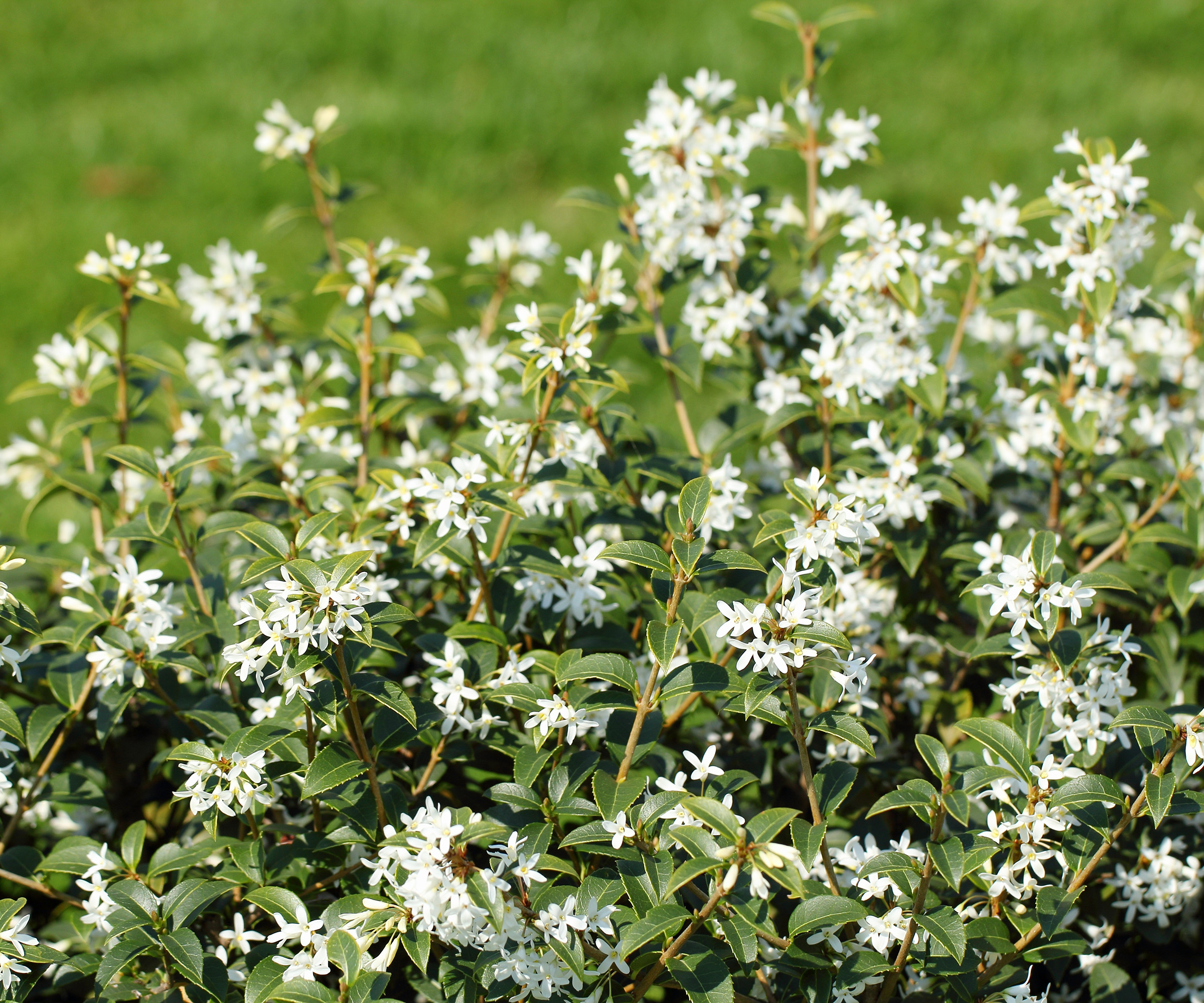
12 of the best plants for flowering hedges
If you're planning on planting a hedge in your garden this year, and would like it to include that added element of color, our top picks are sure to inspire you.
1. Lavender

Conjuring up heavenly images of French lavender fields and English cottage gardens, a lavender hedge in full bloom is a sight to behold. Lining entranceways, enveloping alfresco dining areas and poolside terraces, these masses of tiny blooms set against silver-green foliage come in all shades of white, lilac and deepest purple.
Adored by bees for their nectar, these hardy plants are a must in any summer garden and if clipped annually after flowering, they can form a neat, evergreen boundary. English varieties - Lavandula angustifolia, such as this one from Nature Hills, and Lavandula intermedia tend to be more frost hardy than French lavender - Lavandula stoechas. Some types of lavender can also be relatively short lived – lasting two or three years – so may need replacing often.
Learn how and when to plant lavender for healthy, long-lasting results. For a neat, straight hedge, space lavender plants 16 inches (40cm) apart and water regularly until established.
Design expertise in your inbox – from inspiring decorating ideas and beautiful celebrity homes to practical gardening advice and shopping round-ups.
2. Spirea
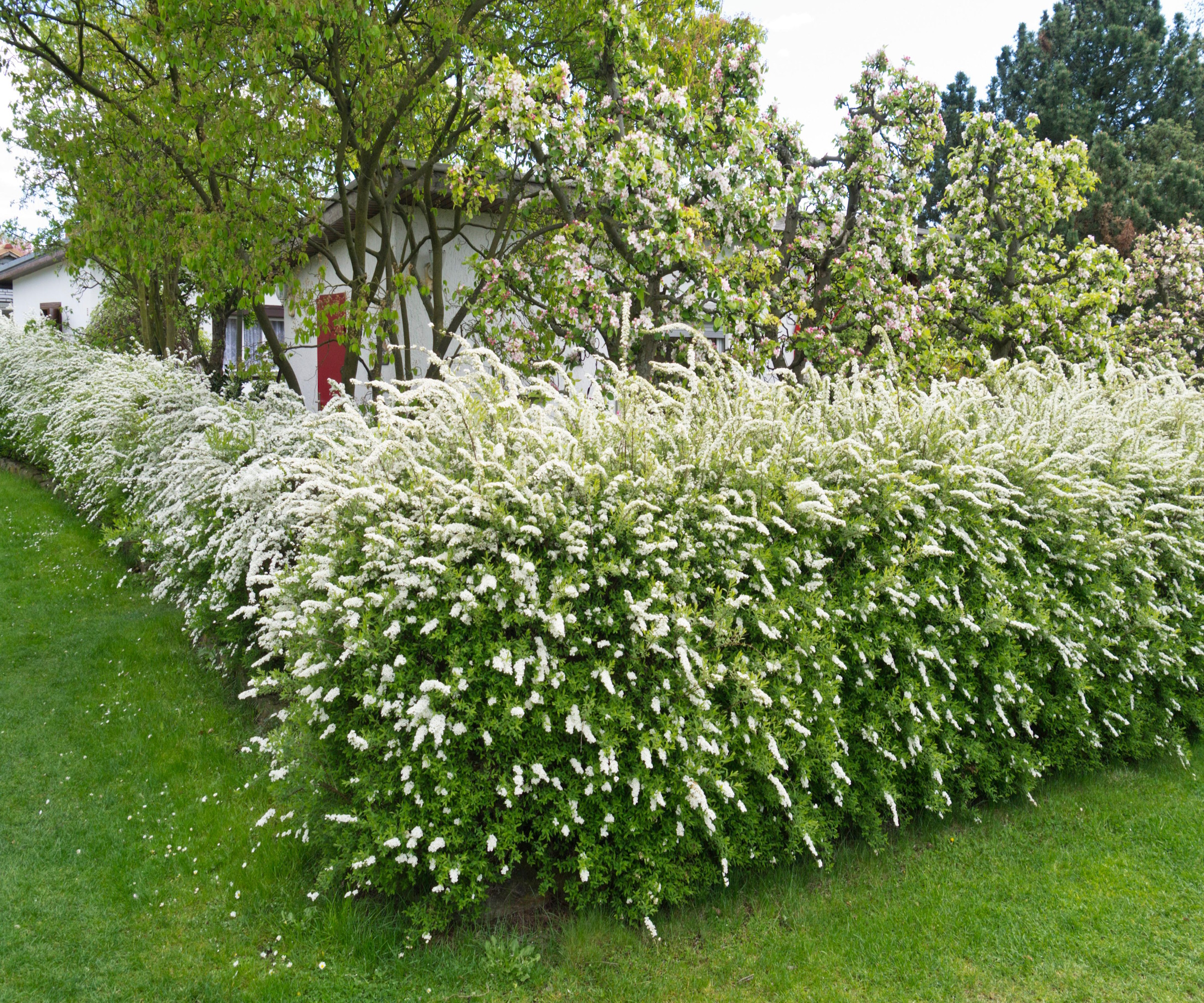
Smothered in masses of tiny white or pink, showy blooms from spring to late summer, a spirea hedge is a breathtaking sight. They are a magnet for bees and other pollinators, making them one of the best hedges for wildlife into your yard.
The attractive, smooth green and variegated leaves turn to spectacular shades in fall but do leave slender bear stems throughout winter, so are best used for hedging where privacy is not an issue.
There are among 80-100 different species to choose from, many of which are ideal for planting as hedges. Tolerant of temperatures down to 35F, these hardy shrubs are popular with many landscapers not only for their good looks and reliability, but for their unfussy nature too. The Renaissance spirea variety from Nature Hills has spectacular cascading spring blooms. Learn how to prune spirea correctly for long flowering shrubs that will dazzle for weeks on end.
3. Camellia
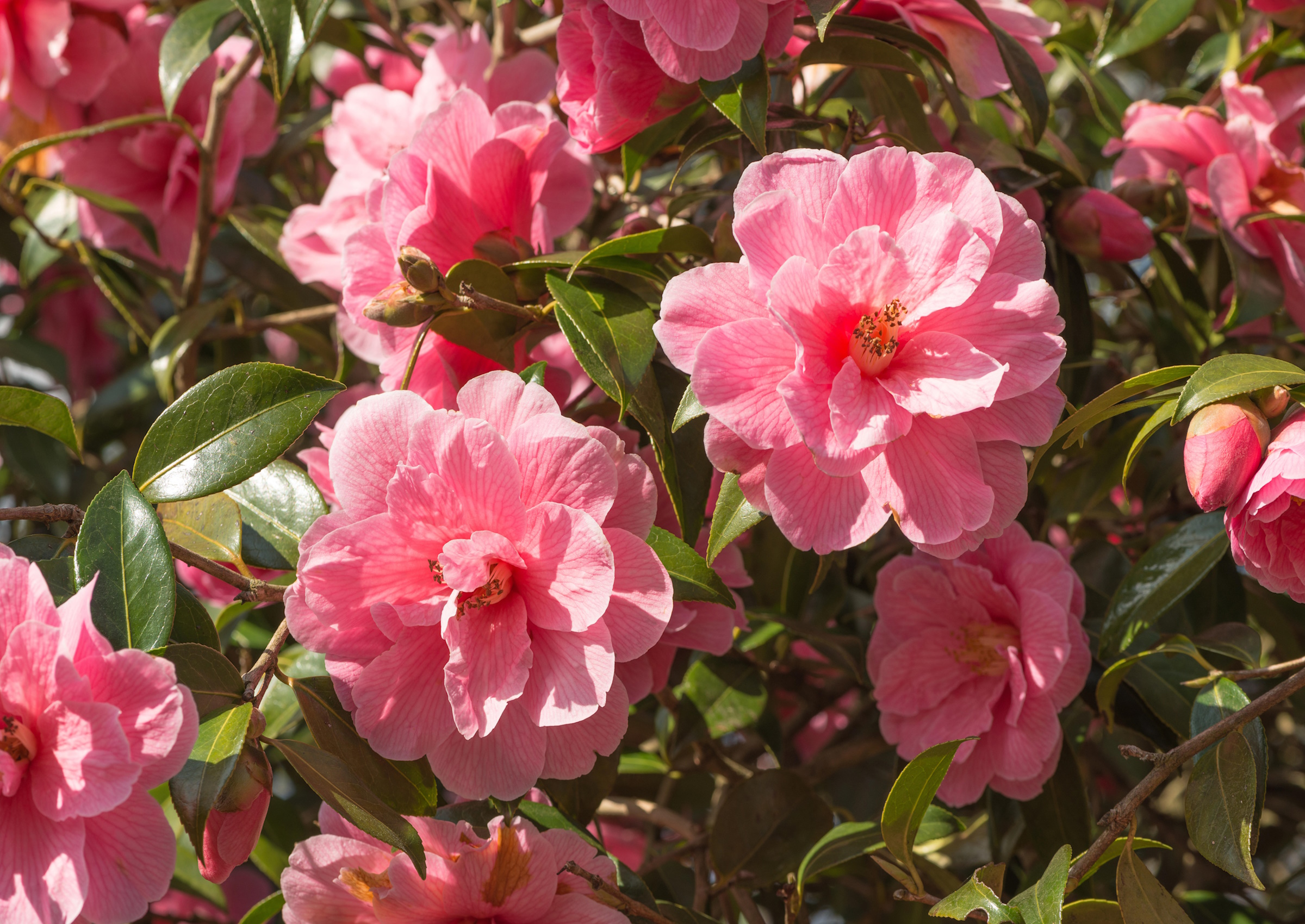
If you love hedges with flamboyant, bold blooms and glossy foliage, camellias are for you. Easy-to-grow and evergreen, they will bring a vivid dash of color to the neighbourhood when little else is flowering.
Camellias make wonderful flowering hedges, providing dense evergreen screening year-round and bursts of color at certain windows in the growing season
While commonly recognized for their bold lipstick pink and red colors, less traditional favorites are white blooming varieties like Camellia sasanqua 'Setsugekka' which blooms in soft, papery single petals late fall into winter, grows 8-10' (2.4-3m) tall and can be clipped to maintain a consistent shape. The soft ballerina pink Camellia japonica 'Nuccio's Pearl' reaches 6-8' tall, and shows off in late winter and early spring with dense, double blooms jammed with geometry and ombre colors.
4. Forsythia

If you are looking for a tough hedge that’s happy growing in most conditions, then forsythia is a winner. Tolerant of full sun and part shade, it will quickly grow into a dense hedge up to 10ft high.
Sporting fresh green foliage from spring turning brilliant red in fall, it’s the early show of dazzling yellow flowers that really make this shrub stand out. Tammy Sons, founder of TN Nursery agrees. ‘The forsythia shrubs are one of spring's first blooming shrubs. It's intoxicating vibrancy of bright yellow blooms adorn the entire branches of the shrub and is low maintenance and drought tolerant making it a favorite of most homeowners.’
Reaching up to heights of 8 feet, and hardy in zones 5 to 9, this popular shrub can live for many decades and can be easily propagated from softwood cuttings. Discover how to grow forsythia in your yard and learn how to prune it like a pro for healthy growth.
5. Hydrangea arborescens

Laden with striking mop-headed blooms in summer, hydrangeas are hugely popular and instantly recognisable. Bringing show stopping color and sculptural form to every corner of the yard, they can also be planted as statement boundaries.
Preferring a sunny spot, but also tolerant of partial shade, these garden favorites are pretty easy going and require little attention. Hydrangeas have huge snowballs for blooms, are highly fragrant and have a long blooming cycle in spring and late summer making it a favorite, especially of old southern plantation homes and homesteads.
When it comes to choosing varieties there are plenty of stunners to choose from. Tammy suggests: ‘The top choices in hydrangeas are the Nikko Blue, which has dinner plate size deep blue snowball blooms all throughout the summer months. The Pee Gee hydrangea, available here from Walmart, is also a favorite shrub, hardy in the moderately warmer zones of 6 to 9, it has large vibrant white blooms in mid-summer.'
‘For smaller yards, Hydrangea arborescens makes a gorgeous summer flowering hedge,’ says landscape architect Carolyn Gange. ‘A late winter cut-back will give enough time for these hydrangeas to regrow as the weather warms up for summer.’

Tammy grew up in a small rural town in middle Tennessee and now lives just down the road from where she grew up. Married young, with three exceptional children and five grandchildren. Studied horticulture at TTU and is the CEO at Tn Nursery. She remains mostly at home, writing about the environment and enjoying her family.

Carolyn Gange designs residential gardens and is the owner and principal designer of Turning Leaf Landscapes in Geneva, Illinois. After 15 years of a corporate marketing career, a visit to a famous Chicago public garden opened her eyes to opportunities in the green industry. It was then that she knew it was time to turn over a new leaf and pursue her passion for design and plants.
6. Escallonia

True sun lovers, escallonia are robust shrubs that are covered in red, white or pink bell-shaped blooms from June to October. Most varieties are evergreen with their small, glossy deep green leaves showcasing the clusters of waxy flowers. Tolerant of salty conditions – they are often spotted thriving in coastal gardens and make stunning garden hedges.
The flowers are hugely popular with pollinators, so be sure to only clip hedges into shape once flowering is over.
Originating in South America, these woody shrubs are hardy to USDA zone 7 but will succumb if temperatures dip below 23F (-5C). If in doubt, grow next to a brick wall for added protection.
7. Japanese azalea
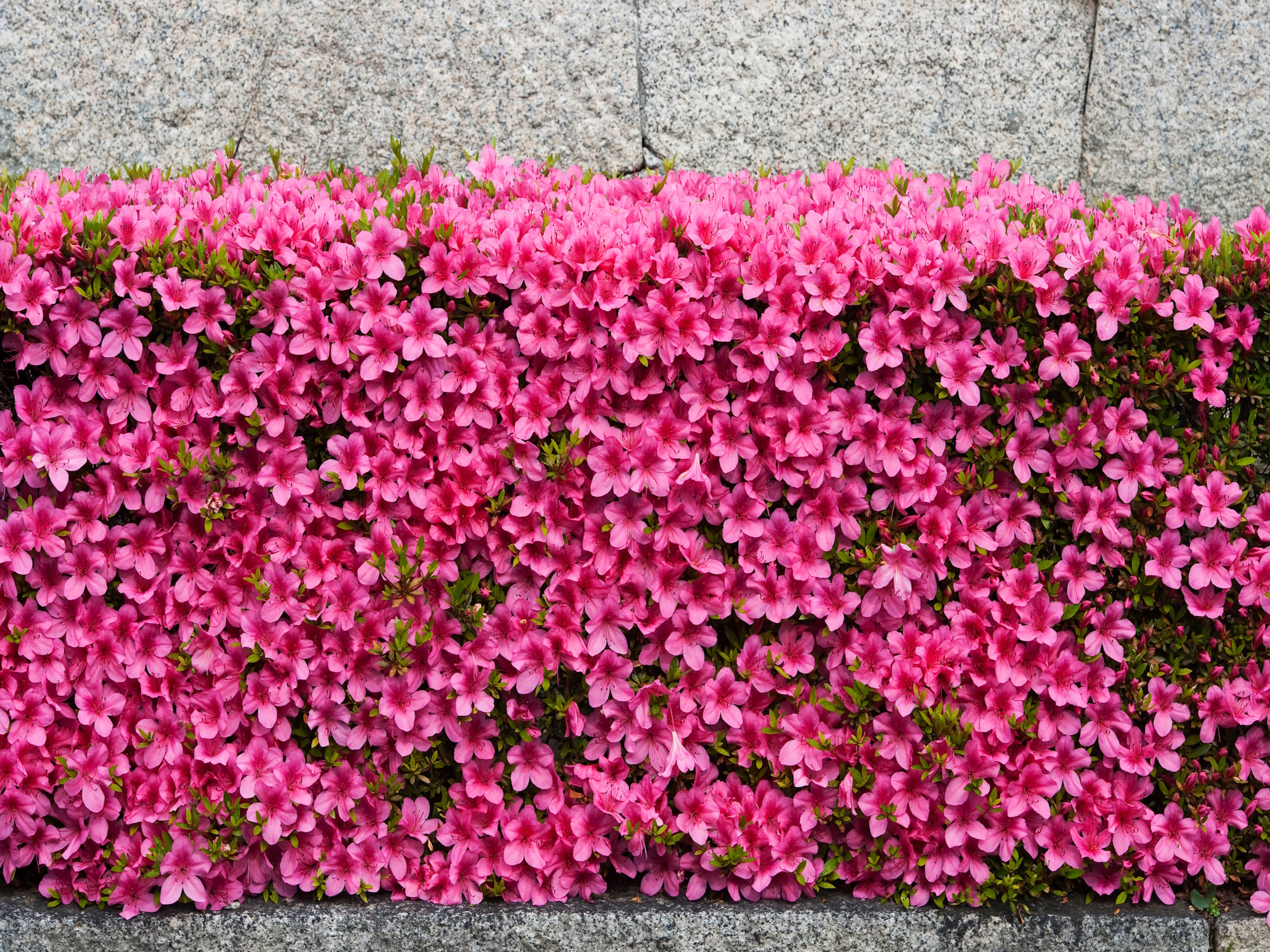
Providing they are clipped immediately after flowering, Japanese azaleas make an impressive garden hedge. With their extraordinary display of cerise, red or white blooms in mid to late spring they will dazzle the neighbourhood with their theatrical display.
Best suited to a sunny or part shady spot with acidic soil, these evergreen shrubs need little attention throughout the year, rewarding with a show of dense glossy, green foliage.
There are many varieties of azalea to choose from so check the height spread of a mature plant before planning your hedge. Ranging from dwarf varieties 1ft 6” (0.5m) up to 6ft (1.8m), there are plenty of options for creating a sturdy and long lasting hedge. It is also a good idea to consider feeding your flowering hedges. If you are unsure, read our guide on how and when to fertilize hedges. Flowering shrubs, such as azaleas, can be hungry, and feeding can help with their floral display.
8. Philadelphus
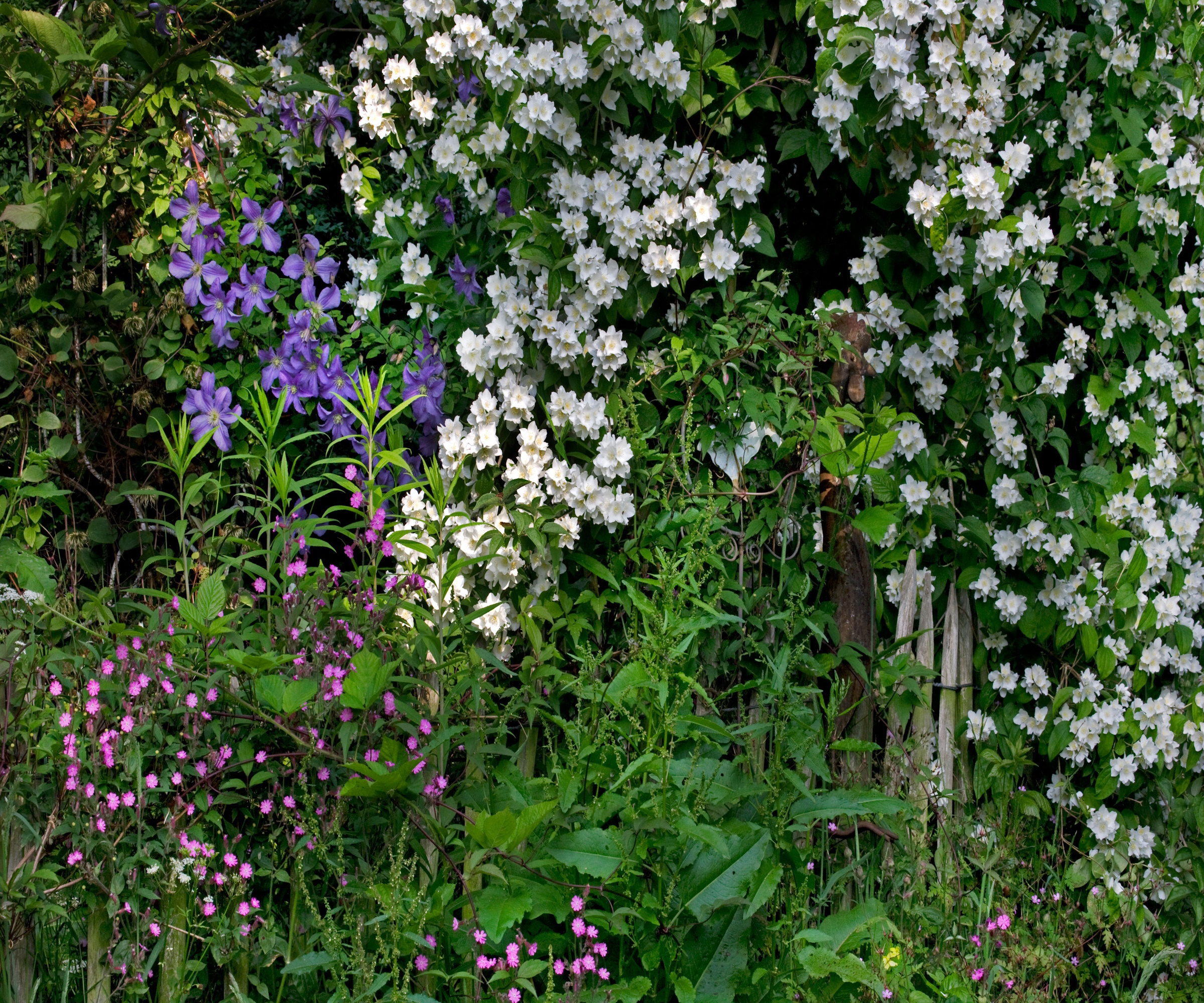
Also widely known as mock orange, this shrub is instantly recognised for its sweet, fruity fragrance and delicate, white, cup-shaped flowers. Blooming from late spring to early summer, it’s display season may be fleeting but it is a seasonal highlight worth looking forward too.
Often planted as a standalone garden shrub or placed at the back of a border, philadelphus, available from Burpee, can actually be trained into a striking hedge. Preferring full sun or part shade, it can reach a height of 10-21 ft (3-3.7m) and will thrive in most soil types, as long as they are well drained.
Best pruned immediately after flowering, this woody shrub will quickly form a relaxed, informal boundary laden with a mass of deciduous, deep green leaves. Discover other fast growing shrubs here.
9. Lilac

A cottage garden favorite, lilacs are adored for their cascades of highly perfumed flowers in dreamy shades of white, mauve, purple and pink. Set against their lush, bright green leaves these conical blooms make a striking springtime spectacle and are adored by butterflies, bees and other pollinators.
Usually grown as a standalone shrub, they also make a beautiful, dense hedge growing up to 1 to 2 feet in a year. A deciduous woody plant, they can look a little bare and spartan during the colder months, but this is soon forgotten once the foliage and blooms reappear in April and May.
Best suited to a sunny spot – too shady and the shrub won’t bloom – lilacs, such as this 'sensation' variety from Nature Hills, thrive in US hardiness zones 3 to 7. They prefer a neutral to chalky, fertile soil and hate having their roots sat in wet, waterlogged soil, so make sure your soil is free draining. Aim to plant lilac hedging plants roughly 20 inches (50cm) apart and clip regularly to form a thick, healthy hedge that’s smothered with flowers. Knowing exactly when to prune lilacs is key for spectacular blooms.
10. Rosa rugosa
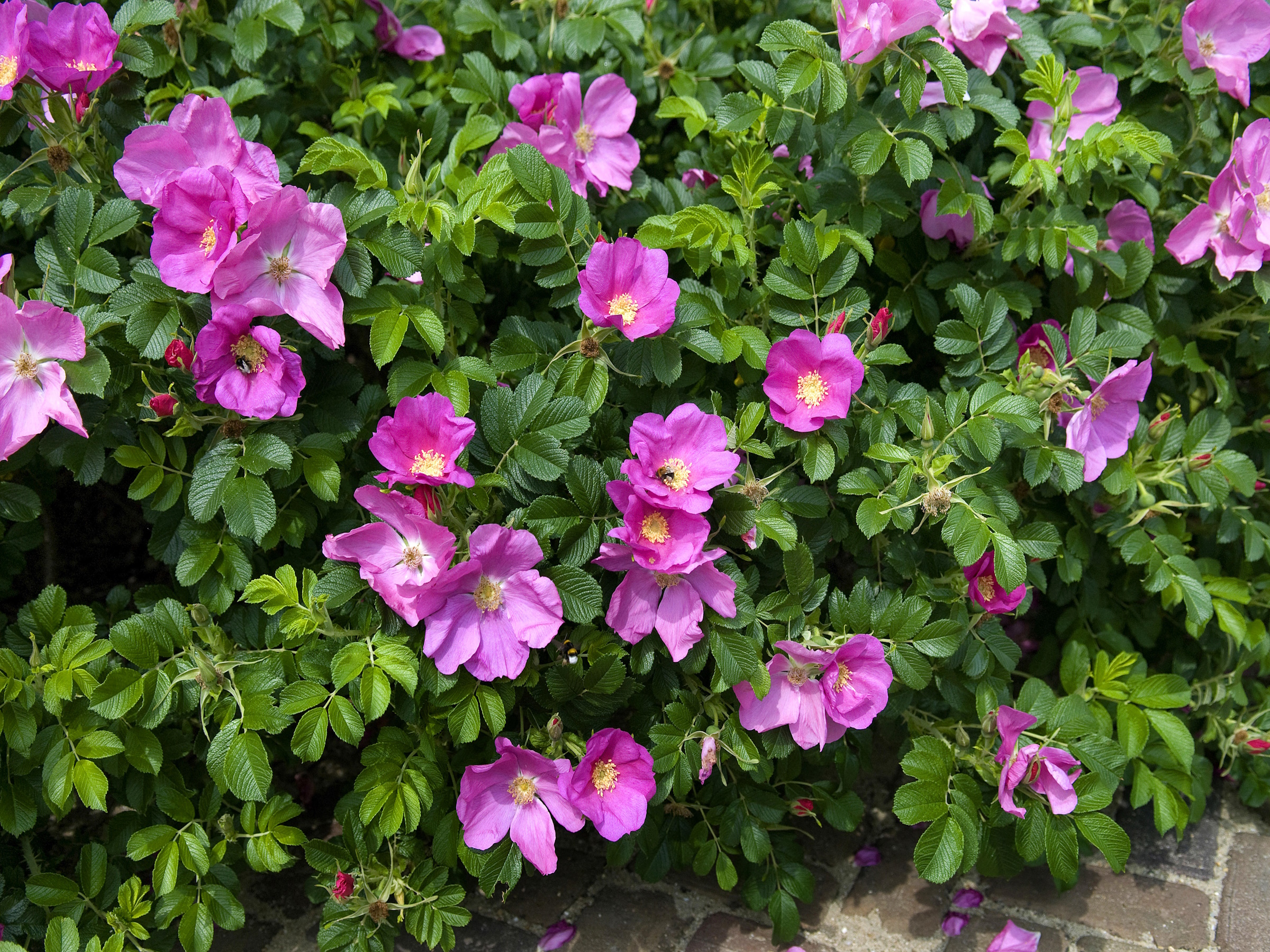
Also known as Japanese rose, this plant forms a thick, sturdy hedge that is covered in magnificent white or pink flowers from June to September. These blooms are then followed by handsome, large red hips in fall that are hugely popular with garden birds and mammals alike.
A real tough beauty, the stems of this plant are covered with ultra sharp thorns, ideal for security but, perhaps, not for lining narrow pathways or seating areas. Thriving in exposed, coastal areas and tolerant of temperatures as low as -4F (-20C), the Japanese rose is happy growing in the poorest of soils, including sand dunes and salt-laden soil. It can become too comfortable in some situations if left unchecked, so do check for straying suckers throughout the growing season.
11. Viburnum carlesii
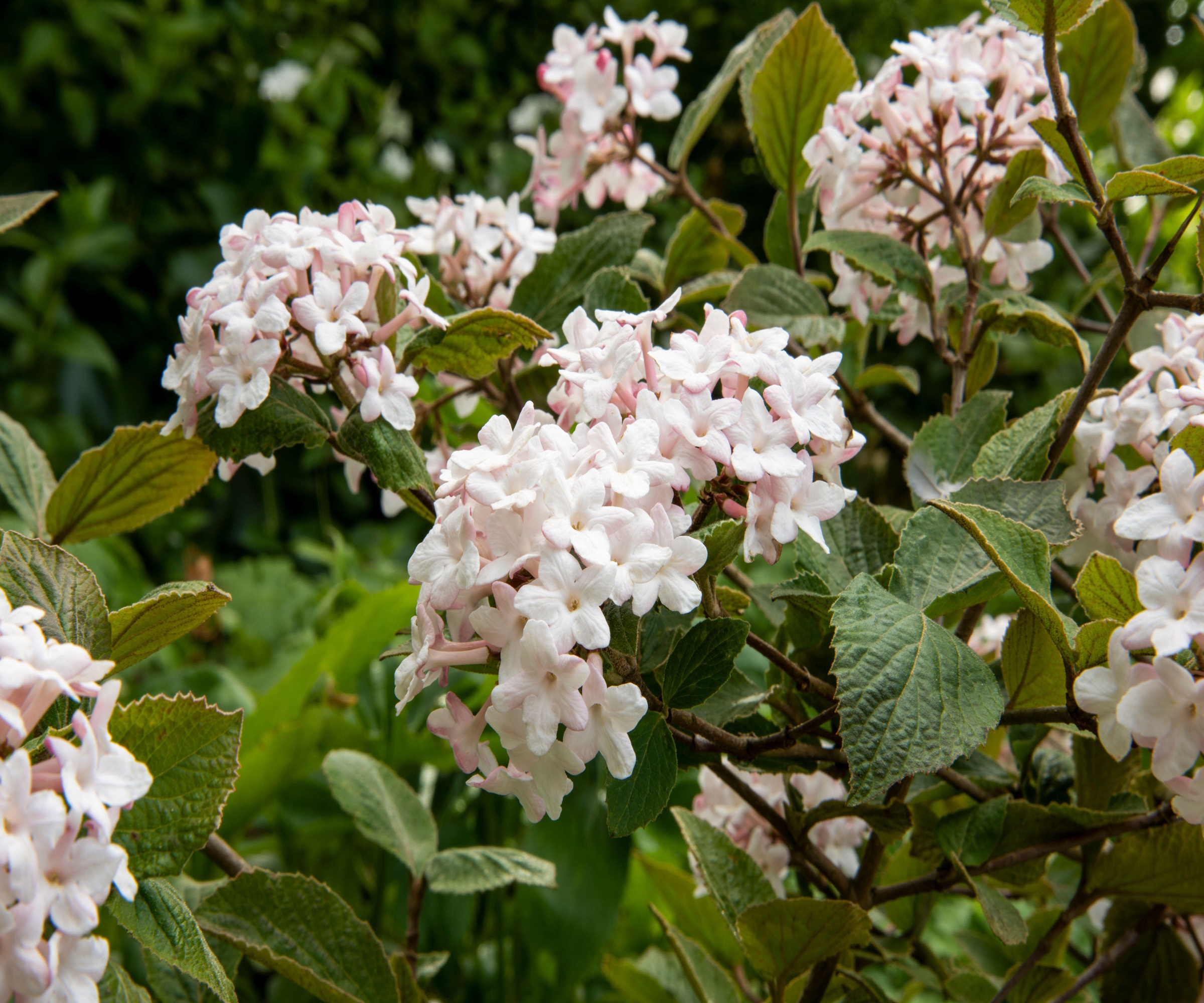
It’s hard to beat beautiful Rosa Rugosaiburnum carlesii as a hedging plant. With its clusters of white trumpets fringed with pink coupled with the sweet – spicy fragrance its sure to stop you in your tracks. Also known as Arrowood or Korean Spice viburnum, this springtime beauty is ideal for lining path and driveways and has a loyal following amongst garden designers.
'I love viburnums and I think my favorite viburnum carlesii is perfect for a hedge. It’s 8ft tall, narrow and semi-evergreen, blooming early in the spring it smells phenomenal,' says designer Irene Kalina-Jones, owner of Outside Space NYC.
In fall juicy black-blue berries appear throughout this deciduous shrub and provide a feast for garden birds. Grow in US hardiness zones 5-9, either in a part shade or sunny spot.

Irene is a graduate of the Parsons School of Design and studied horticulture at the Brooklyn Botanical Garden. Her current landscape design work combines her background in advertising, graphic design, and horticulture to create multi-seasonal gardens focused on texture, color, and species interaction.
12. Hawthorn
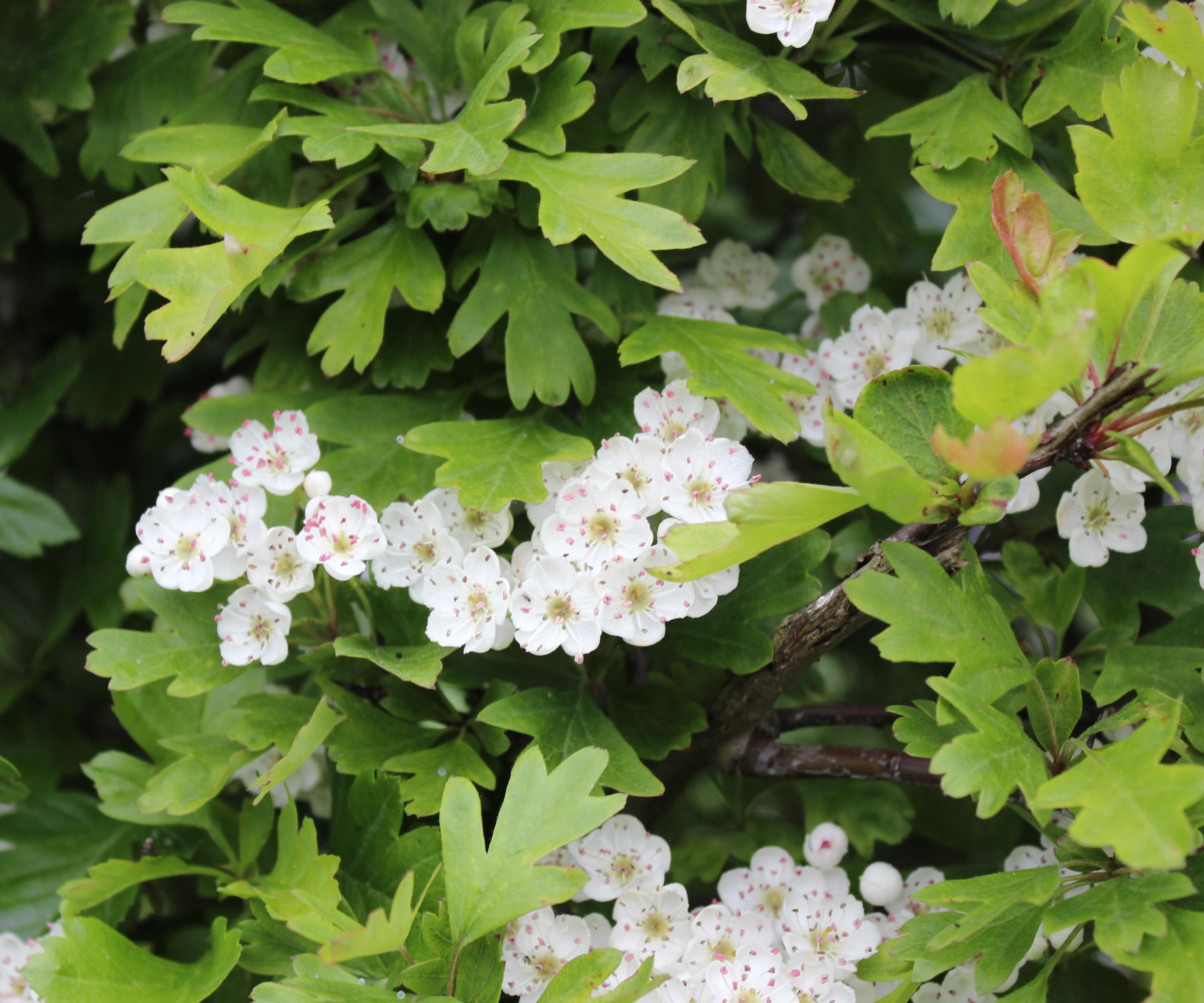
Attractive and a magnet for wildlife, hawthorn is a fabulous hedging option. Grown widely across the UK and North America it will form a dense, prickly boundary perfect for protecting birds, mammals and an effective deterrent for unwanted visitors too.
Smothered in nectar-rich white flowers in spring followed by red, shiny berries in fall, it makes an attractive - if slightly wild-looking boundary - perfect for rural gardens. Apart from very wet and shady spots, this deciduous shrub will thrive in most situations including very exposed, wind blown and coastal areas.
A speedy grower - hence it's common name quickthorn - this plant is great if you need to a establish a fast growing hedge in a short timeframe. Clip back after flowering, to keep in shape, or if nesting birds are present, wait until fall.
FAQs
What is the easiest flowering hedge to grow?
There are plenty of low maintenance options when it comes to growing a flowering hedge but one of the most resilient choices has to be privet.
Privet plants makes an excellent border, privacy and hedge plant that is evergreen which means they stay lush and green year-round. They also bloom in both spring and summer season, depending on the variety, and offer the best of both worlds, year-round beauty, flowers and privacy.
Inspired to replace boring garden boundaries with flowering hedges? Well, discover how to plant a hedge plus other ways to encourage wildlife into your garden.

Journalist Jill Morgan has spent over 20 years writing and editing gardening, interior and property features. Titles she has worked on include The English Home, House Beautiful, Ideal Home, Houzz and Modern Gardens and she writes regularly for H&G as a Contributing Editor. Whilst she is a dab hand at renovation projects and DIY, she is happiest when out digging in the garden or planning a new border.